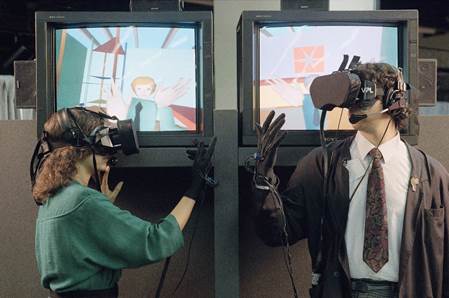
The topic of virtual reality seems to be getting more exciting by the day. It started becoming a popular topic in mainstream media over the last couple of years, with phone companies and video games implementing these advancements into their technology. The term “virtual reality” was first used in the 80’s by Jaron Lanier, the founder of VPL Research, which was one of the first companies to sell VR products.

When you first think of virtual reality, you typically think of its application to entertainment. But there are an endless number of uses for VR that have the ability to revolutionize entire industries. Essentially, VR takes you out of the real world, and directs all of your attention to content generated through the headset. This is immensely extraordinary in a world where content and messages have become so cluttered and overwhelming, that they are competing for only split seconds of viewers’ and recipients’ attention. Virtual reality is an opportunity for brands to be able to deliver a “super-enhanced” message directly to you, and only you. The virtual reality industry calls it “presence.” It has the capability of transporting you anywhere in space and time; the front row view of a concert or football game, or downing a cappuccino while standing at a coffee bar in Rome. Three-D graphic artists can paint without any walls or boundaries; one may see the inside of a house without physically visiting it, or sit inside and drive your dream car. There are already multiple advertising companies that specialize in taking your brand into the virtual world.
The only thing virtual reality can’t do is let you interact with your physical surroundings. It is full immersion into a story world or memory that is extremely useful for branding as it captures your full, undivided attention. But there is another form of digital submersion that is even more useful than virtual reality for branding, and that is “augmented reality.”
Augmented reality is a live view of the physical, real world, with computer generated additions to add to the environment. Essentially, it enhances your current perception of reality in real time. Movie producers and video game creators have used AR commonly throughout the decade, however the technology has developed rapidly in the last few years, making it desirable for many more applications in addition to the entertainment world.
Both IKEA and Amazon have implemented augmented reality technology, so its potential customers can virtually place furniture in their homes and see how it will look in their own living rooms, or how a new refrigerator might match with their other kitchen appliances.
Very recently, Amazon acquired the 3D scanning technology company, Body Labs, presumably to use their human body and movement scanning technology to allow consumers to actually try on clothing before purchasing.
Apple -- who has helped develop AR technology for IKEA and Anthropologie -- is currently in the process of developing ways to implement AR with eyeglasses in the near future. In a recent interview with Vogue, Tim Cook, CEO of Apple, predicted, “Over time, I think it will be as key as having a website” in reference to AR technology applications for branding.
There are endless ways AR can be used for increasing a brand’s connection with its target market. Not just in seeing what you might look like wearing different outfits or lipsticks, but in branding as well. For instance, an Australian wine brand, “19 Crimes” recently launched an app that brings their wine labels to life.
19crimes_MusicA from Peter Oberdorfer on Vimeo.
Pretty cool, right? This new concept got me cogitating about the opportunity this creates in the market for an application that can bring all of a brand’s labels to life in one place. Such an application could vendor and host brands within the application, create AR acceptable labels for them, and display them with their app – and even tell you where exactly you can find and purchase a certain brand’s AR-labeled products.
As you can tell, we are still in the infancy of VR and AR technologies, and how they might be implemented into entertainment, shopping, advertising/branding. The possibilities truly seem endless! What ideas or thoughts do you have? Any idea where AR and VR will go next? Or how the largest tech companies like Google, Apple, and Amazon will be using it in the near future? Comment and tell us your thoughts!

